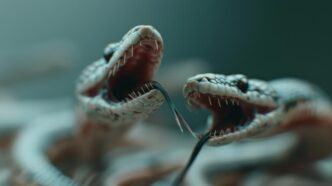Quick Takeaway
Animal & Element Origin
Impact on Personality
Diverse Interpretations
The timeless art of Chinese calligraphy offers a profound pathway to connect with culture, mindfulness, and personal expression, particularly when applied to the rich symbolism of the Chinese Zodiac animals. This ancient practice, originating in China millennia ago, invites artists and enthusiasts alike to explore brush techniques, ink mastery, and spiritual depth to render the twelve iconic animal signs. By understanding the fundamental principles of calligraphy and the unique characteristics of each zodiac animal, individuals can unleash their inner artist, creating powerful and meaningful depictions that resonate with personal understanding and cultural heritage.
The Enduring Legacy of Chinese Calligraphy
Chinese calligraphy is far more than mere writing; it is considered one of the highest art forms in Chinese culture, revered for its aesthetic beauty and philosophical depth. It embodies the essence of Chinese thought, where brush strokes are seen as extensions of the artist’s mind and spirit. The practice cultivates patience, discipline, and a deep appreciation for balance and harmony.
At its core, calligraphy utilizes the “Four Treasures of the Study”: the brush, ink, paper, and ink stone. Each element plays a crucial role in the artistic process, from the subtle variations in brush hairs to the rich tones achieved by grinding ink on stone. Mastering these tools is the first step towards creating expressive and spirited calligraphic works.
The Twelve Zodiac Animals: Symbols of Spirit
The Chinese Zodiac, a cyclical system of twelve animal signs, plays a pivotal role in Chinese culture, influencing personality traits, destiny, and interpersonal relationships. Each animal—Rat, Ox, Tiger, Rabbit, Dragon, Snake, Horse, Goat, Monkey, Rooster, Dog, and Pig—carries a unique set of characteristics and symbolic meanings. Depicting these animals through calligraphy is an act of both artistic creation and cultural homage.
In traditional Chinese art, animals are not just rendered realistically; they are infused with their inherent spirit and symbolic power. A Dragon, for instance, represents power and fortune, while a Rabbit symbolizes gentleness and agility. Capturing these intangible qualities with the stark elegance of ink and brush is the ultimate challenge and reward for the calligrapher.
Mastering Calligraphic Techniques for Animal Forms
Translating the dynamic forms of zodiac animals into calligraphic art requires a nuanced understanding of brush control, ink manipulation, and compositional principles. The goal is not photographic realism, but rather to capture the qi, or vital energy, of the animal through simplified yet expressive strokes. This involves a blend of precision and spontaneity.
Brush Control and Stroke Variation
The Chinese calligraphy brush is remarkably versatile, capable of producing a wide range of lines from razor-thin to broad and sweeping. Artists learn to control pressure, speed, and the angle of the brush to create varied textures and forms. For animal depictions, this means using light, quick strokes for fur or feathers, and heavier, deliberate strokes for musculature or bone structure.
Different calligraphic styles, such as the meticulous Gongbi or the freehand Xieyi (also known as ‘literati painting’), offer distinct approaches. While Gongbi emphasizes fine detail and precise outlines, Xieyi focuses on capturing the essence and spirit with fewer, more expressive strokes. Adapting these styles allows for a diverse range of interpretations for each zodiac animal.
Ink Grinding and Consistency
The preparation of ink is an art in itself. Grinding an ink stick on an ink stone with water allows the artist to control the ink’s consistency and tonal variations. Thicker ink produces solid, dark lines, while diluted ink creates lighter, more ethereal washes. These variations are crucial for adding depth, shadow, and texture to animal forms, suggesting volume and movement.
For example, a diluted wash might suggest the soft fur of a Rabbit, while a concentrated, dry brush stroke could convey the rugged texture of a Dragon’s scales. Understanding how ink reacts with paper is fundamental to achieving desired effects and bringing the animal to life.
Composition and Negative Space
In Chinese art, the arrangement of elements on the paper, known as composition, and the strategic use of negative space are as important as the drawn forms themselves. The empty space around the animal is not merely background; it is an active part of the composition, contributing to the overall balance and visual harmony. A well-composed zodiac animal piece will feel complete and dynamic, even with minimal strokes.
Bringing Specific Zodiac Animals to Life
Each zodiac animal presents unique calligraphic challenges and opportunities for expression. The artist must internalize the animal’s characteristics and translate them into brushwork.
The Dynamic Dragon
The Dragon, a symbol of power and good fortune, demands dynamic, flowing, and often swirling strokes. The calligrapher might use strong, undulating lines to depict its body, suggesting movement through clouds or water. Sharp, angular strokes can define its claws and horns, emphasizing its formidable nature.
The Majestic Tiger
For the Tiger, embodying courage and strength, bold and decisive strokes are essential. Powerful, sweeping lines can form its muscular body, while shorter, sharper strokes define its distinctive stripes and fierce gaze. The aim is to convey its raw power and regal presence.
The Gentle Rabbit
The Rabbit, known for its gentleness and agility, calls for soft, delicate, and graceful strokes. Fine, curved lines can suggest its soft fur and nimble movements. The overall impression should be one of peace and quiet elegance, perhaps with a slight upward tilt to convey its alertness.
The Energetic Horse
Capturing the spirit of the Horse, a symbol of perseverance and freedom, requires energetic and swift strokes. Long, fluid lines can convey its powerful gait and flowing mane, while a sense of momentum is crucial. The brushwork should evoke speed and unbridled spirit.
Infusing Spirit: The Art of Qi
Beyond technique, the true mastery of calligraphic animal depiction lies in infusing the work with qi, the vital life force or spirit. This is where the artist’s inner state and intention become paramount. A calligrapher must not just draw the animal, but become attuned to its essence, allowing that energy to flow through the brush.
This spiritual connection transforms mere lines into a living representation, imbuing the artwork with a palpable sense of the animal’s character. It’s a meditative process, where concentration and a clear mind guide the hand, creating a piece that resonates deeply with viewers.
Starting Your Calligraphic Journey
For those inspired to unleash their inner artist and explore Chinese calligraphy through the lens of the zodiac, the journey begins with foundational steps. Gather your “Four Treasures”—a good quality brush, an ink stick and stone, and suitable rice paper. Start by practicing basic strokes, focusing on brush control and the interplay of ink and paper.
Many resources, from online tutorials to books and local classes, can guide you. Begin with simpler forms before tackling the complexities of entire animals. Patience and consistent practice are your greatest allies. As you progress, consider focusing on your own zodiac animal, allowing a personal connection to deepen your artistic expression and understanding of this profound art form.
Chinese calligraphy offers a unique and enriching way to engage with the symbolism of the Chinese Zodiac animals, blending artistic skill with cultural appreciation and personal mindfulness. By mastering the brush, understanding ink, and connecting with the spirit of each animal, aspiring calligraphers can create beautiful, meaningful works that transcend mere depiction. This artistic journey is an invitation to explore a rich cultural heritage and express one’s creativity in a deeply resonant way, fostering both discipline and spiritual connection.








